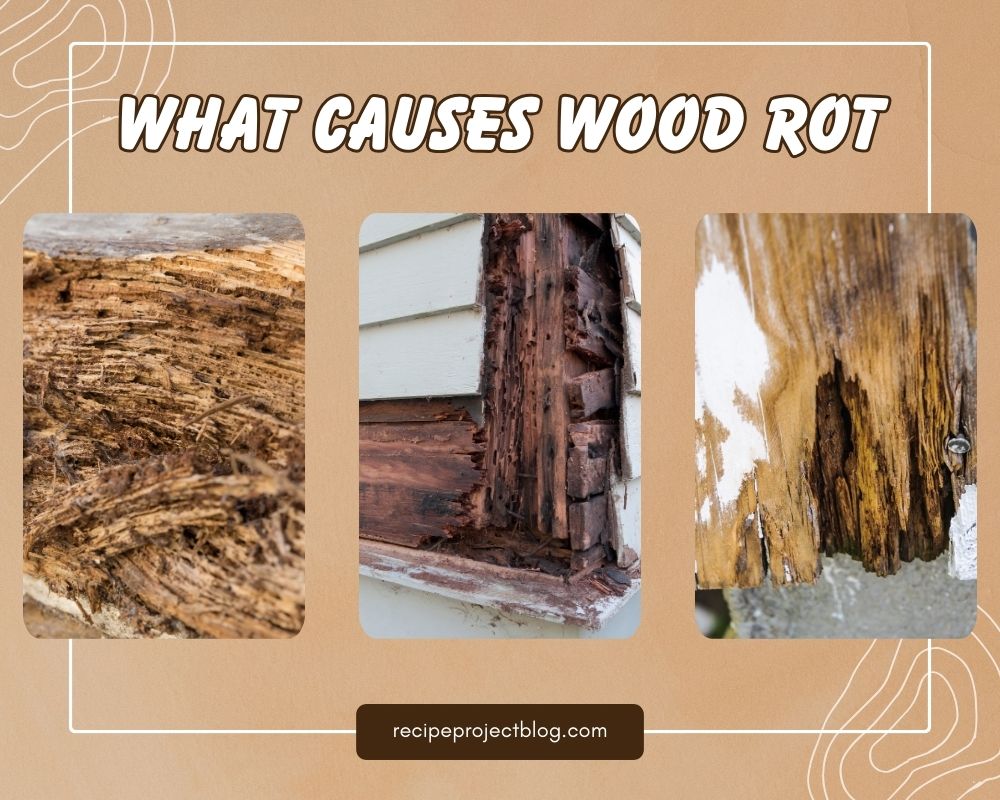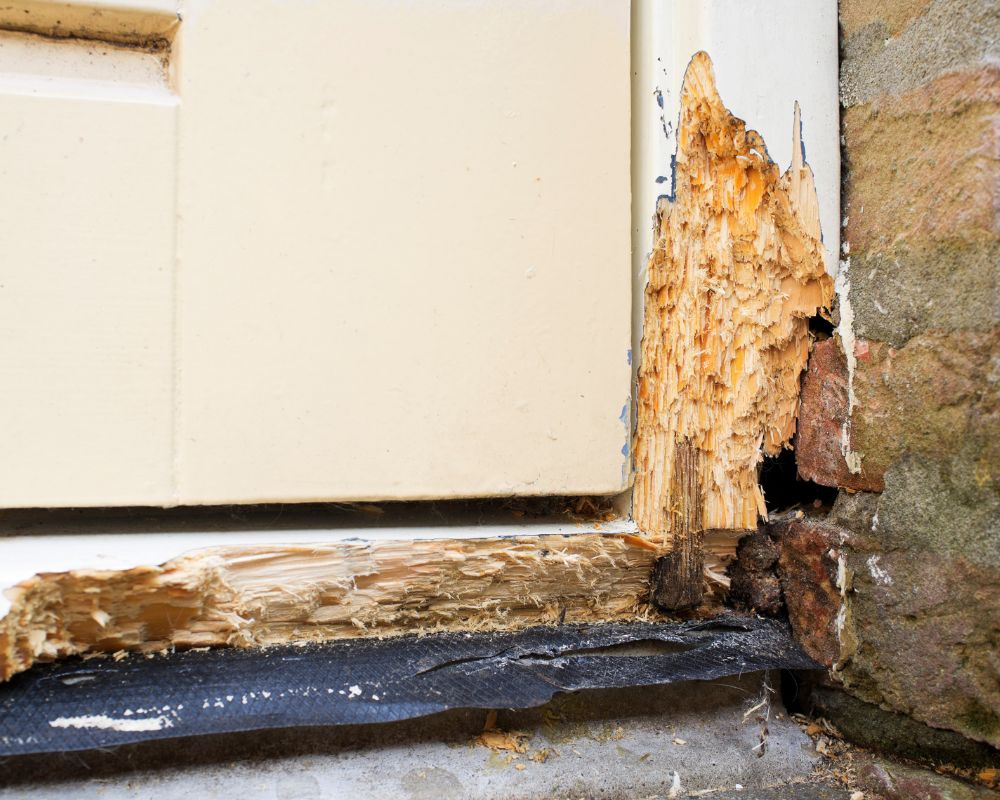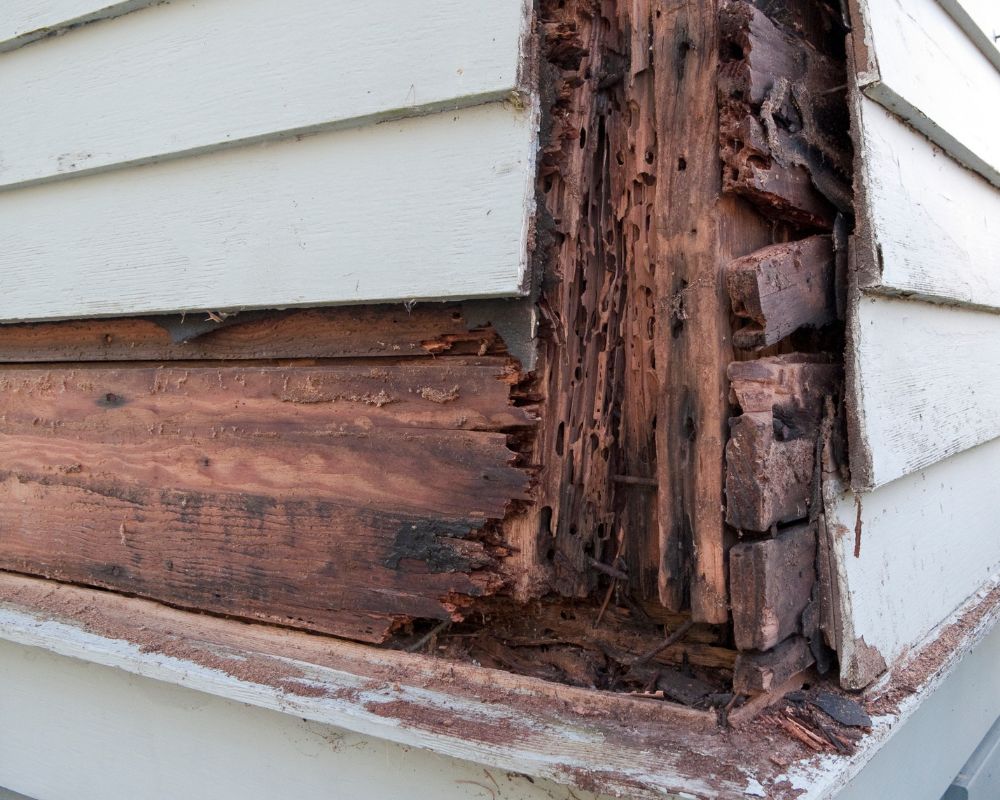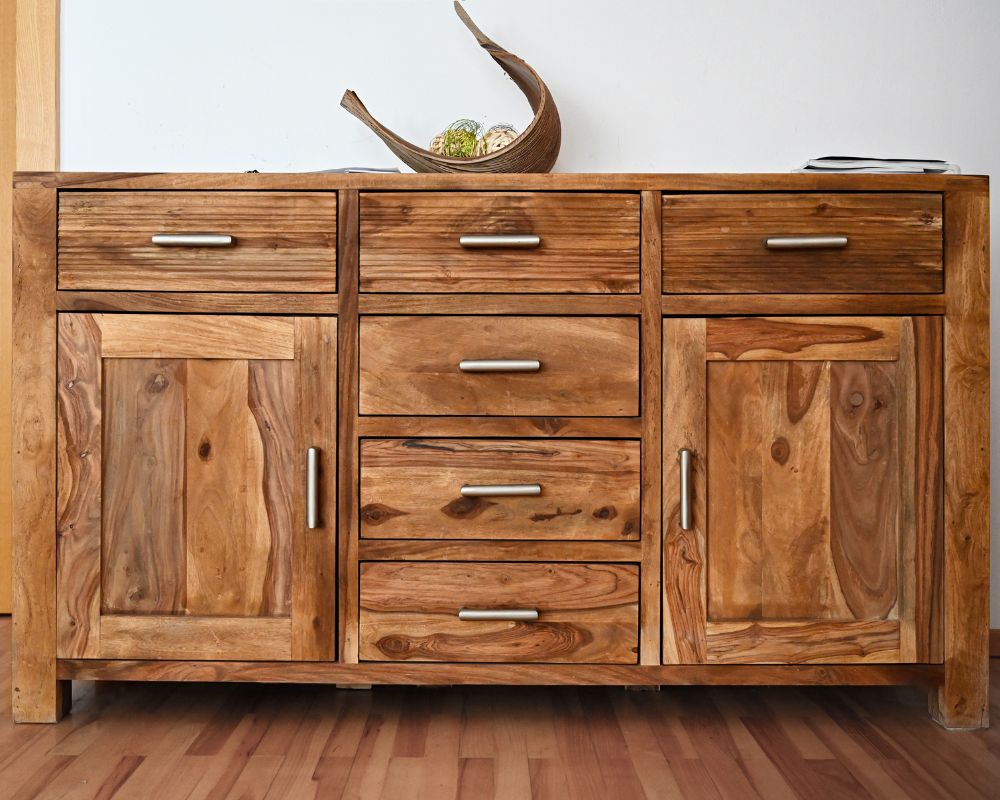What Causes Wood Rot | Understanding the Effect

What causes wood rot. Did you know that wood rot affects an estimated 2.2 million homes in the United States annually? That’s a staggering number, highlighting the widespread impact of this common problem. Wood rot can compromise the structural integrity of your home or building, leading to costly repairs and potential safety hazards. To protect your investment and ensure the longevity of wooden structures, it’s crucial to understand the causes of wood rot and take proactive measures to prevent and address it. This article will explore the primary factors contributing to wood rot, including moisture, fungi, and other environmental conditions. By gaining insight into these causes, you can effectively protect your structures and preserve their integrity.
Table of Contents
Introduction to Wood Decay and Its Impact on Structures
Wood decay is a natural process that can significantly impact the structural integrity of various wooden elements, including beams, joists, and support posts. Understanding the causes of wood decay is crucial for effectively preventing and addressing wood rot. By recognizing the mechanisms behind wood decay and its potential consequences, you can take the necessary steps to protect your structures and ensure their long-term durability.
What Causes Wood Rot

Wood rot is primarily caused by the growth and activity of certain fungi on the surface and within the wood. Understanding the science behind wood deterioration and the role of moisture in wood rot development is crucial for effectively preventing and addressing this issue.
1. Understanding the Science Behind Wood Deterioration
The science behind wood rot involves specific types of fungi that feed on wood fibers, causing deterioration. These fungi break down the structural components of wood, such as cellulose and lignin, leading to weakened and decayed wood.
Various types of fungi can cause wood rot, including:
- Brown rot fungi
- White rot fungi
- Soft rot fungi
2. The Role of Moisture in Wood Rot Development
Moisture plays a critical role in the development and progression of wood rot. Excess moisture creates an ideal environment for fungi to thrive and propagate, leading to accelerated wood decay. It is important to note that even small amounts of moisture can contribute to the growth of wood rot fungi.
Common sources of moisture that can cause wood rot include:
- Leaking roofs or plumbing
- Poor drainage around the foundation
- High humidity levels
- Condensation buildup
Controlling moisture levels through proper ventilation, waterproofing measures, and timely repairs is essential for preventing wood rot.
| Common Causes of Wood Rot: | Primary Causes of Wood Rot: |
|---|---|
| Presence of wood rot fungi | Moisture buildup |
| Poorly maintained wood surfaces | Lack of proper ventilation |
| Inadequate waterproofing | Leaking roofs or plumbing |
| High humidity levels | Poor drainage around the foundation |
Identifying Different Types of Wood Rot
Wood rot can manifest in different forms, each with unique characteristics and impacts on wood integrity. This section will explore the three main types of wood rot: brown rot, white rot, and soft rot. We will discuss the distinguishing features of each type and examine the specific causes and prevention strategies for brown rot, white rot, and soft rot. By identifying the different types of wood rot, you will be better equipped to implement targeted prevention and treatment measures.
Brown Rot: Characteristics and Prevention Strategies
Brown rot is a type of wood decay that results in a dry and crumbly appearance of the affected wood. It typically appears brown or reddish and tends to break across the grain, leaving cubes or rectangular fragments behind. Fungi from the Serpula lacrymans and Coniophora puteana species primarily cause brown rot.
The key to preventing brown rot is to address the underlying cause: excessive moisture. Implementing proper drainage, ensuring adequate ventilation, and promptly repairing any leaks or water damage can help prevent the development of brown rot. Applying wood preservatives and coatings that protect against fungal growth can further enhance prevention efforts.
White Rot: Understanding Its Unique Properties
White rot is another type of wood decay that affects the lignin component of wood, leaving behind a bleached appearance. The affected wood may become spongy or stringy and can easily break apart. White rot is caused by fungi such as Phanerochaete chrysosporium and Trametes versicolor.
Controlling moisture levels is crucial for preventing white rot. Ensuring proper drainage, eliminating sources of excess moisture, and maintaining adequate ventilation can help inhibit the growth of white rot fungi. Regular inspections and immediate repairs of any detected leaks or water damage are essential for preventing the spread of white rot.
Soft Rot: Causes and Impact on Wood Integrity
Soft rot is a type of wood decay that typically affects wood in contact with soil or exposed to high levels of moisture. It results in localized areas of decay, leaving the wood soft and crumbly. Soft rot is caused by fungi such as Chaetomium globosum and Ceratocystis spp.
The primary cause of soft rot is high moisture content combined with favorable temperature conditions. Preventing soft rot requires proper ventilation, controlling moisture levels, and avoiding direct soil contact with wooden structures. Regular inspections and prompt repairs of any areas showing signs of moisture damage are essential for preventing the spread of soft rot.
Common Causes of Wood Rot in Homes and Buildings

Wood rot is a prevalent issue in homes and buildings, and understanding the common causes is essential for preventing and addressing this problem. Here are some of the key reasons why wood rot occurs in these environments:
- Excessive moisture: Moisture is one of the primary culprits of wood rot. Leaks in roofs, plumbing, or around windows can introduce moisture to the wood, creating an ideal environment for fungal growth and decay.
- Poor ventilation: Inadequate airflow can trap moisture, increasing humidity and promoting fungi growth that cause wood rot. Poorly ventilated crawl spaces, attics, and bathrooms are common spaces where wood rot can occur.
- Lack of maintenance: Ignoring regular maintenance tasks, such as painting or sealing wood surfaces, can leave them vulnerable to water penetration and subsequent wood rot. Lack of maintenance can also allow small issues to escalate into more significant problems.
- Inadequate construction practices: Improper construction techniques, such as insufficient flashing or improper siding installation, can result in water intrusion and subsequent wood rot. Poorly designed drainage systems can also accumulate moisture around the foundation, increasing the risk of wood rot.
- Environmental factors: External environmental conditions, such as proximity to bodies of water or exposure to excessive rainfall, can significantly impact the likelihood of wood rot. High humidity and temperature fluctuations also contribute to the development of wood rot.
By being aware of these common causes of wood rot, you can take proactive measures to prevent it and protect your home’s or building’s structural integrity.
| Cause | Description |
|---|---|
| Excessive moisture | Leaky roofs, plumbing, or windows introduce moisture, creating an ideal environment for fungal growth and wood rot. |
| Poor ventilation | Inadequate airflow traps moisture, leading to increased humidity and fungal growth. |
| Lack of maintenance | Ignoring regular maintenance tasks leaves wood surfaces vulnerable to water penetration and subsequent wood rot. |
| Inadequate construction practices | Improper construction techniques, such as insufficient flashing or improper installation, can result in water intrusion and wood rot. |
| Environmental factors | Proximity to bodies of water, excessive rainfall, high humidity, and temperature fluctuations contribute to wood rot development. |
Environmental Factors Contributing to Wood Rot
Environmental conditions can significantly impact the development and progression of wood rot. Two key environmental factors contributing to wood rot are temperature and seasonal changes. Understanding the effects of temperature and climate and the impact of seasonal variations is crucial for effectively mitigating wood decay and preserving the integrity of wood structures.
1. How Temperature and Climate Can Accelerate Wood Decay
Temperature plays a vital role in the rate of wood decay. Higher temperatures can accelerate the growth and activity of fungi responsible for wood rot, leading to faster deterioration of wooden structures. In warm and humid climates, the risk of wood rot increases significantly. The combination of moisture and heat creates an ideal environment for fungal growth and the subsequent decay of wood.
On the other hand, extreme cold temperatures can also harm wood structures. Freezing temperatures can cause the expansion and contraction of moisture within the wood, leading to cracks and structural weakness. These cracks provide entry points for fungi, further exacerbating the risk of wood rot.
2. Seasonal Changes and Their Effect on Wooden Structures
Seasonal changes can have a profound impact on the condition of wooden structures. The alternating exposure to moisture and, dryness and temperature changes can cause wood to expand and contract. This constant change in size can lead to stress on the wood fibers and contribute to the development of cracks and vulnerabilities that facilitate the entry of fungi.
Moreover, seasonal variations in humidity levels can affect the moisture content of wood. During wet seasons, increased moisture in the air can result in higher levels of wood saturation, creating an environment conducive to fungal growth and wood decay. Conversely, dry seasons can cause the wood to lose moisture, resulting in shrinkage and potential structural instability.
By understanding the impact of these environmental factors, such as temperature and seasonal changes, you can implement appropriate measures to mitigate wood rot. Regular inspections, proper ventilation, and timely maintenance are essential in preserving the longevity and integrity of wood structures.
Recognizing Early Signs of Wood Rot and Taking Action
Detecting wood rot in its early stages is crucial for preventing further damage and ensuring timely intervention. By identifying the early signs of wood rot, you can promptly address the issue and minimize its impact on your wooden structures. Here are the common signs to look out for:
- Discoloration: Keep an eye out for any visible discoloration on the surface of the wood. Darkening or staining may indicate the presence of wood rot.
- Softness: Press on the wood surface to check for soft or spongy areas. Wood rot tends to weaken the structure, causing it to feel softer than healthy wood.
- Fungal Growth: Look for the appearance of fungal growth on the wood. This can take the form of mushrooms, mold, or mildew. Fungi thrive in moist environments and are a clear indication of wood rot.
Once you have identified any of these early signs of wood rot, it is important to take appropriate action. The following steps are recommended:
- Professional Assessment: Contact a professional contractor or wood rot specialist to assess the extent of the damage and provide expert advice on the best course of action.
- Repair and Restoration: Depending on the severity of the wood rot, repairs may involve removing and replacing the affected sections or treating the wood with appropriate anti-fungal solutions. Professional expertise is crucial to ensure effective restoration.
- Preventive Measures: Address any underlying causes of wood rot, such as moisture issues or inadequate ventilation, to prevent future occurrences. Proper maintenance and regular inspections can help prevent wood rot from reoccurring.
By recognizing the early signs of wood rot and taking prompt action, you can safeguard your wooden structures, extend their lifespan, and avoid the potentially costly consequences of extensive rot damage.
| Early Signs of Wood Rot | Recommended Action |
|---|---|
| Discoloration, darkening, or staining on the wood surface | Contact a professional for assessment and repair |
| Soft or spongy areas when pressing on the wood | Consider removing and replacing the affected sections |
| Fungal growth, such as mushrooms, mold, or mildew | Apply appropriate anti-fungal treatment and address moisture issues |
Maintenance and Prevention Tips to Avoid Wood Rot Causes

Regular inspections and proactive maintenance are key to preventing wood rot and preserving the integrity of your wooden structures. You can identify potential issues early and implement effective treatment solutions by taking the appropriate measures. Here are some practical tips and recommendations to help you safeguard against wood rot:
Regular Inspections to Catch Wood Deterioration Early
It is important to conduct regular inspections of your wooden structures to catch wood rot in its early stages. Inspect all areas susceptible to moisture damage, such as the foundation, roof, walls, and decks. Look for signs of discoloration, softness, or fungal growth, as these can indicate the presence of wood rot. Promptly address any issues you identify to prevent further deterioration.
Effective Treatment Solutions for Affected Wood
If you discover wood rot in your structures, it is crucial to address it promptly to prevent further damage. Effective treatment solutions include removing and replacing affected wood, applying wood preservatives, and implementing targeted repair techniques. Consult with a professional to determine the best course of action based on the extent of the damage and the type of wood rot present.
By implementing these maintenance and prevention measures, you can significantly reduce the risk of wood rot and extend the lifespan of your wooden structures. Regular inspections will help you catch wood deterioration early, while effective treatment solutions will mitigate the impact of wood rot. Remember to prioritize proper ventilation, sealing, and maintenance to protect your wooden elements from moisture and fungal growth. By taking these steps, you can ensure your wooden structures’ long-term durability and beauty.


